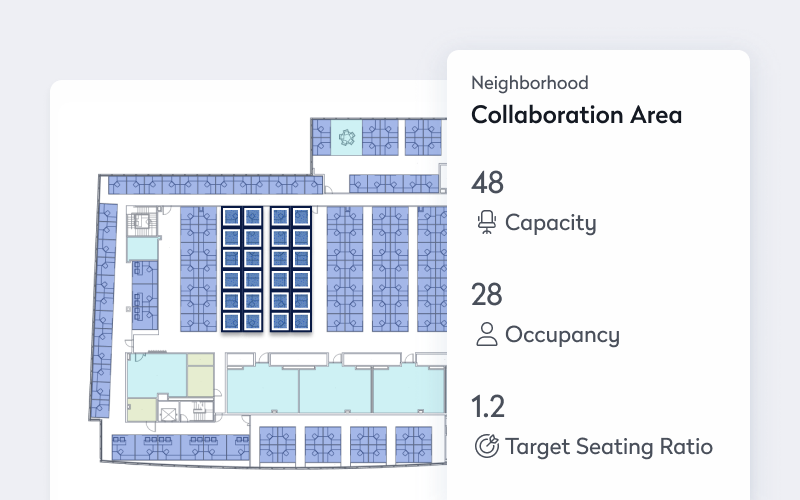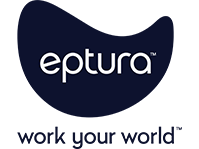
Enterprise-level organizations that establish and track goals see closer alignment across teams, sharper focus on key priorities, increased transparency, and accountability. Everyone at the organization has a role to play, from the leadership who creates the big picture to individual employees who need to align their own work goals with the company’s vision. Facility and workplace leaders can support business goals by implementing modern intelligent worktech to deliver efficient, productive, and impressive workspaces.
What are common business goals for enterprise-level companies?
Organizational goals are the strategic objectives that guide the actions and decisions of large enterprises. They’re comprehensive, covering and connecting financial targets, market positioning, innovation, employee satisfaction, and customer loyalty.
Common goals across industries include:
- Revenue growth
- Market expansion
- Customer satisfaction
- Risk management
- Strategic partnerships
- Supply chain optimization
- Regulatory compliance
- Product diversification
Companies regularly reassess their business goals to stay aligned with their vision and ensure long-term success. By analyzing past performance, for example, they can identify what has worked and what hasn’t, allowing them to refine their strategies. Future projections, including forecasts and potential risks, also help when setting new, achievable objectives.
Key organizational goal: Operational efficiency
Operational efficiency involves optimizing business processes to reduce costs, improve productivity, and enhance the overall performance of the company. Projects can include automating tasks, streamlining workflows, improving supply chain management, and reducing waste.
By reducing costs and improving productivity, a company can increase its profit margins and allocate resources more effectively. Efficient operations also lead to better customer service and faster response times, which can enhance customer satisfaction and loyalty. Additionally, operational efficiency can help in scaling the business and managing growth more sustainably.
Key organizational goal: Employee engagement and retention
Employee engagement and retention focus on creating a positive work environment that motivates and retains top talent. Companies can use competitive compensation, professional development opportunities, a supportive company culture, and work-life balance initiatives to keep employees engaged, productive, and less likely to leave.
Retaining talent also reduces the costs associated with hiring and training new employees, which can be significant for large organizations. A strong, stable workforce is essential for maintaining high standards of service and driving business growth. Engaged employees are also more likely to contribute to a positive company culture, which can attract new talent and enhance the company’s reputation.
Key organizational goal: Customer acquisition and retention
By understanding customer needs and preferences, companies can tailor their offerings and communications to meet those needs, ensuring that customers feel valued and supported.
Acquiring new customers helps in expanding the customer base and increasing market share, while retaining existing customers ensures a steady stream of revenue and reduces the costs associated with customer acquisition. Engaged and loyal customers are more likely to make repeat purchases, provide positive referrals, and offer valuable feedback, which can drive product improvements and innovation.
Use case: How data-backed space planning and streamlined meeting and workspace reservations drive operational efficiency
A large multinational corporation with offices in New York, London, and Tokyo is looking to optimize its real estate costs and improve employee productivity.
They start by implementing a comprehensive space planning solution that allows the facility management team to visualize and manage all office spaces in a centralized platform. The software helps in designing layouts that maximize the use of available space, including converting underutilized meeting rooms into collaborative work areas. By standardizing space usage across all locations, the company can reduce rental costs, improve resource allocation, and ensure that each office is configured to support the specific needs of its teams, leading to higher productivity and efficiency.

Next, the company introduces an intelligent desk and room booking system that integrates with their existing calendars. Employees can easily book desks and meeting rooms from a single, user-friendly interface, whether they are in the New York headquarters or the Tokyo branch. The system provides real-time updates on availability, sends automated reminders, and allows for last-minute changes. It also captures usage pattern data, helping workplace leaders and facility staff identify and address issues like overbooked rooms or underutilized desks. The solution reduces administrative overhead and ensures employees have the resources they need to work efficiently, enhancing overall operational performance.
Use case: How creating collaborative, flexible workspaces improves employee engagement and retention
A corporation wants to improve employee engagement and retention by creating a more positive and collaborative work environment. An important part of the project is finding ways to increase flexibility.
They start with space planning to design workspaces that foster collaboration and well-being. For example, they create open-plan areas with comfortable seating and ample natural light, which are known to boost morale and creativity. They also set up quiet zones and private meeting rooms to accommodate different work styles and needs. By involving employees in the design process and ensuring that each location has spaces that reflect the local culture and preferences, the company can create a more engaging and supportive environment. This not only helps in retaining top talent but also in attracting new employees who value a well-designed, modern workspace.

They then implement an intelligent desk and room booking system that supports flexible work schedules and remote working. Employees can easily reserve a desk or meeting room at any of the company’s locations, allowing them to work from different offices or even from home when needed. The system also provides options for booking collaborative spaces, such as breakout rooms and team pods, which can be used for informal meetings and brainstorming sessions. By offering this level of flexibility, the company helps employees manage their work-life balance more effectively, reducing stress and increasing job satisfaction. This, in turn, leads to higher engagement and a stronger commitment to the company, helping to retain top talent and attract new employees who value flexibility.
Use case: Why improving the visitor experience helps with customer acquisition and retention
A financial services company wants to highlight their professionalism and stability with streamlined, frictionless visitor experience
The company rolls out a modern visitor management system that is fully integrated with its digital ecosystem. This system streamlines the check-in process for visitors, including clients, partners, and potential customers, by allowing them to pre-register for their visits. Upon arrival, visitors can use self-service kiosks to check in. The system then sends notifications to the host.
The modern worktech solution helps create a more welcoming and secure environment for visitors, which can significantly improve the first impression and ongoing relationships with clients and partners, helping attract new customers and retain existing ones. Because the automated system reduces the administrative burden on reception staff, they have more bandwidth to focus on value-added tasks, enhancing the overall efficiency of the office.
Creating spaces that support organizational goals
Intelligent worktech plays a pivotal role in creating spaces that support organizational goals like driving operational efficiency and fostering a positive work environment. By integrating advanced space planning tools, facility and workplace leaders can optimize the use of available resources, while desk and room booking systems streamline the reservation process, reducing administrative burdens and enhancing employee productivity. Well-designed, tech-enabled spaces also make a strong impression on visiting clients, reinforcing the organization’s reputation for professionalism and progress.









